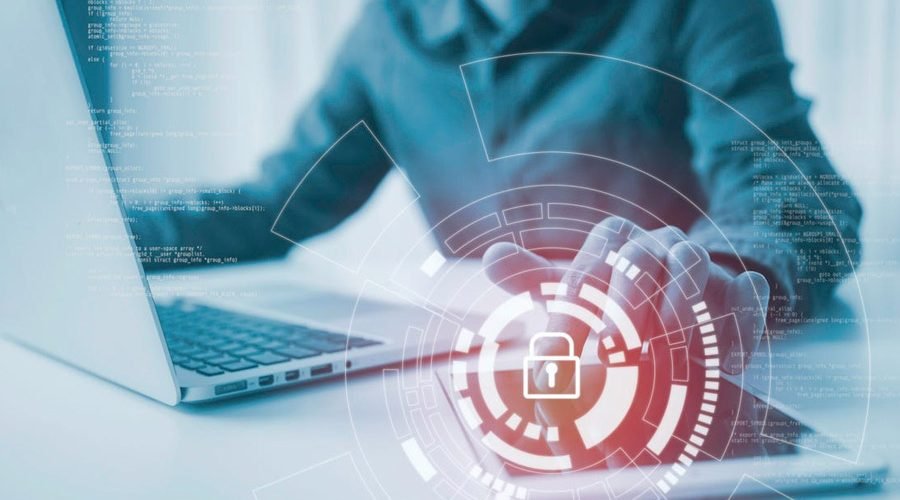Cybersecurity is an essential aspect of protecting a business from online attacks. As a result, the need for cybersecurity solutions has spread across all sizes of businesses and is becoming increasingly important.
Marketers who want to establish demand and build brand recognition must understand their target audience. This will help them create content that resonates on a deep level and builds brand loyalty.
Table of Contents
Enterprises
The enterprise sector is a major target for cybercriminals. Large companies’ vast stores of data and proprietary information make them prime targets for attacks. However, hackers do not discriminate by size, and smaller enterprises are vulnerable to cyberattacks.
As more businesses rely on digital information and technology to run their day-to-day operations, the likelihood of a cybersecurity attack is increasing. This is especially true when it comes to ransomware and data breaches.
These types of attacks can cause significant financial losses and reputation damage, making them a serious business risk. As a result, many businesses are turning to enterprise cybersecurity solutions that can help mitigate and defend against these threats.
Another key aspect of enterprise cybersecurity is protecting third parties from data breaches. Most businesses work with a variety of third-party service providers, and any one of these could be a potential security threat.
To keep these companies safe, educating them on the importance of cybersecurity and providing training on how to protect their networks and data from hackers is important. This includes educating them on the different kinds of cyberattacks that can be used to access and steal data from their organizations.
It’s also important to communicate how your cybersecurity products and services can help them avoid security breaches and other issues. Case studies are an excellent way to demonstrate how your cybersecurity solutions can help them prevent these issues and save money in the long run.
Explainer videos are also a great way to educate your target audience on the importance of cybersecurity and how it can help them protect their data. Executives are often more receptive to learning from videos than written content, which will help you get their attention and make your solutions more believable.
In addition to helping your cybersecurity solution stand out in a crowded marketplace, these marketing strategies will increase brand awareness and drive signups for trials and demos. Using these strategies will help your company grow and prosper in the cybersecurity market, so don’t miss out on this opportunity to improve your bottom line!
SMBs
Cyber-attacks and data breaches are a threat to businesses of all sizes, but small and medium-sized businesses (SMBs) often have fewer resources to build strong cybersecurity programs than large corporations. That means they face a higher risk of falling victim to ransomware, credential theft, or corporate espionage than other organizations.
Many SMBs are understaffed, have limited IT budgets, or operate in a complex business environment that involves many outside vendors. It’s crucial that SMBs partner with trusted suppliers and service providers who are committed to securing their data and technology.
It’s also important to remember that a cybersecurity breach can affect an entire organization, not just one particular computer or device. Having endpoint protection tools that monitor and manage all devices across your network can help you detect and respond to threats in real-time, reducing your chances of a successful attack.
SMBs should also make cybersecurity a priority by educating their employees on how to protect their data and systems. This includes ensuring that all employees have strong password policies, multi-factor authentication, and regular backups.
Employees are a valuable asset for any company but can also be a key source of cybersecurity vulnerabilities. Using simple passwords, for example, is a serious security weakness that hackers can easily exploit.
Changing these passwords is vital for reducing the number of potential security vulnerabilities. Additionally, changing them frequently and using unique passwords for different accounts can prevent the spread of malware or other malicious software.
Cyberattacks can cost businesses a lot of money and cause them to lose valuable customer data, including confidential information. Fortunately, a growing number of SMBs are taking steps to strengthen their cybersecurity defenses. They are adopting best practices and working with a trusted cybersecurity company to ensure their technology and data are protected.
Individuals
Cybersecurity is the process of preventing theft, attack, damage, and unauthorized access to computer systems and data. This includes security measures like antivirus software, firewalls, email protection, and DNS filtering, to name a few.
As the number of digital interactions grows, so does the opportunity for cyberattacks and hacks to occur. These attacks are causing trillions of dollars in damage every year, and it’s not expected to slow down any time soon.
One of the biggest challenges for cybersecurity is the lack of qualified personnel to address the needs of businesses and organizations. As a result, many companies are struggling to secure their networks and data. This is a problem that affects both large and small companies.
To address this problem, companies need to create and implement cybersecurity frameworks and processes that ensure compliance. This can be done by hiring a professional firm that specializes in this area.
Another way to build your brand and authority in the industry is through content marketing. Creating long-form content on topics your target audience is interested in can help you establish yourself as an expert. It’s also a great way to convert site traffic into leads, which can be nurtured with sales promotions.
Case studies and peer reviews are another important component of cybersecurity content marketing. By sharing these stories, you’ll show your prospects you know what they’re going through and how you can help them.
Finally, downloadable content such as eBooks and whitepapers are useful tools for converting website traffic into leads. You can offer these pieces as an incentive to sign up for your newsletter or download your latest report.
No matter where you are in your business, it’s important to have a strong understanding of your market. This will help you determine what type of content to create and what types of offers to create. You’ll also be able to identify what type of keywords and terms to use in your content. This will help you to rank higher on search engines and generate more organic traffic.
Governments
The US federal government is the largest employer of cybersecurity personnel and has many dedicated security teams. Some of these teams are responsible for intercepting foreign cyberattacks, and others for conducting offensive cyber operations against our enemies.
The cybersecurity workforce is strained, with a growing need for qualified professionals who have the necessary expertise and security clearances to protect national assets from cyberattacks. While the federal government is a good place to start, there are other options for those looking to gain employment in this field.
State and local governments are also experiencing a growing cybersecurity staff shortage and a need to implement cyber resilience measures to keep critical systems safe from attack. These challenges can be met by implementing policies that allow staff to work safely while also meeting the needs of their citizens and other stakeholders.
A key goal is to build a comprehensive, holistic cyber strategy that covers all the risks governments face today. This includes ensuring that systems are protected from internal and external threats and managing the complexity of sensitive data and the wide variety of services a government delivers.
It’s crucial for governments to implement an effective threat management strategy that can protect against a full range of attacks, including malware and ransomware. By deploying endpoint detection and response (EDR), privileged account audits, stringent password policies, and more, organizations can reduce the risk of intrusion while protecting their users.
Keeping track of evolving threats is another vital part of the cybersecurity process for government organizations. Organizations can stay updated with the latest information and best practices in cyber security by utilizing an online portal.
By sharing relevant threat intelligence with other sectors, organizations can improve their ability to detect, respond, and mitigate cyber-attacks. This can help governments prevent and reclaim stolen information and minimize the impact of a cyberattack on the nation’s infrastructure.
In addition, organizations can also improve their security posture by establishing cyber security standards that are shared with other entities in the public and private sectors. This can lead to a better cybersecurity culture that protects the interests of all parties involved.





